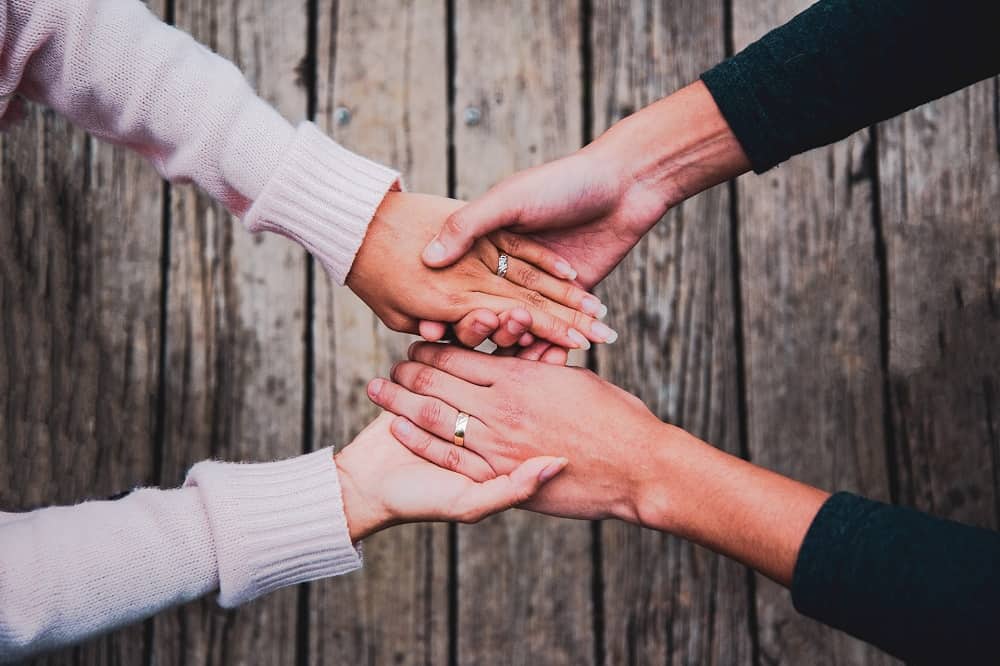The theme of the National Suicide Prevention Week this year is “The Power of Connection.” This is because one of the many factors that can lead to suicide is a feeling of isolation from others. Advocates of preventing suicide say there is evidence that you can reduce the risks if there is a feeling of connection with others. As the 10th leading cause of death in the United States, experts strive to understand and treat causes of suicide. The Centers for Disease Control and Prevention say that suicide rates are growing in all states. That’s why this coming week is so important. If you have a friend/family member or colleagues that is dealing with suicidal thoughts, it’s important to know how to recognize and help them.
National Suicide Prevention Week Events
There are various events throughout every state to raise awareness and find solutions. Founded in 1975, National Suicide Prevention Week now has a cross country campaign. It corresponds with World Suicide Prevention Day. There will be Seattle and Boise National Suicide Prevention Week events going on that. At Northpoint Recovery, we recognize the close connection to suicide and substance addiction. This is why we felt it was important to bring this information to you. Studies have shown that addiction and suicide often coincide with each other. It doesn’t matter which came first, they can easily co-occur together. When the two exist in a person, their chances of committing suicide increase greatly. This is why we believe this annual weekly event is so important for us, as addiction experts. We help many addicts who have co-occurring disorders, which is a high indicator for suicide.
World Suicide Prevention Day – September 10
World Suicide Prevention Day is on September 10th. The organization has implemented a “40 seconds of action” campaign to raise awareness. There will be over 300 activities and events taking place in 70 countries. This includes conferences and events with a lot of coverage on social media like Twitter and Facebook.
Global and National Suicide Statistics
- There are about 45,000 Americans aged 10 or older who died from suicide in 2016.
- Those aged 45-54 are at the highest risk of committing suicide.
- Those that are 85 or older are the second most likely to commit suicide.
- Every year, there are about 800,000 people worldwide that commit suicide. This equates to one person dying every 40 seconds.
Mental Health, Addiction and Suicide Prevention
There are a few different factors that can cause someone to attempt suicide. Mental health issues like depression and anxiety are among the main reasons. Another reason is addiction, which can also correlate with a mood disorder. If you, or someone you love has a substance addiction, it can seem like a hopeless situation. Many addicts won’t ask for help and they isolate themselves.There are services that can help someone who is having suicidal thoughts. They are available throughout the year. One of the organizations is Project Semicolon. The reason the National Suicide Prevention Week has events in Seattle and all over the country is so you can identify someone in trouble. Raising awareness means the general public will be able to notice signs that someone is suicidal. When you can identify if someone has an addiction, mental health problems, and is at risk of suicide, you have an opportunity to reach out. This can make all the difference to someone who feels lost and alone in their life.
How do Suicide and Addiction coincide?
Abusing drugs and alcohol can lead to addiction and potentially suicide. The physical and mental side effects make you more susceptible to suicidal tendencies. The behaviors that go along with addiction can cause you to lose friends, family, your home, and your job. These types of losses can lead to serious depression, and potential suicide attempts. The US has a higher than average percentage when it comes to suicide attempts on a worldwide scale. Drug and alcohol abuse has risen alongside of these statistics. Suicide has been brought on by substance abuse. Often, overdose deaths are a form of suicide. Here are some of the addiction and suicide statistics from the Centers for Disease Control and Prevention (CDC):
- The suicide rate in the US is 12.93 for every 100,000 individuals. This is very close to the same number of deaths from drugs and alcohol abuse.
- More men die from suicide than women. The theory is that more men are committing suicide because they abuse substances as a way to repress their feelings.
- The average suicide number per day is 117 people. That number includes 22 American veterans per day. This particular demographic has shown a high use of mind altering pharmaceutical drugs.
Drug Addiction and Suicide
A study involving heroin addicts was conducted regarding the correlation between drug addiction and suicide. They took 100 heroin addicts who had tried to commit suicide against 100 opiate addicts who hadn’t attempted suicide. There was a significant difference in those who had abused heroin for longer and had used it intravenously. There was significantly greater risks for those with psychotic disorders and those who had family members who abused drugs and exhibited suicidal behavior.The greatest risk factor is for those who have a mental health problem. Around 90% of people who attempt or commit suicide will have one or many psychiatric disorders. The study found that someone with an addiction is six times more likely to attempt suicide. Drug addicts will often try to commit suicide by overdosing on their drug of choice. They may combine various drugs or mix with alcohol. If someone is feeling suicidal, drugs that potentially lead them there are much like a loaded gun.
Alcoholism and Suicide
Suicide and alcohol abuse are closely intertwined. In fact, 28% of adults were intoxicated when they committed suicide. The demographic were adults age 20 to 49. Alcohol is a depressant. While it may numb your emotions, it also influences your brain chemicals. As you drink more, you become more depressed. It can cause you to become suicidal over time. If you have already felt suicidal before becoming addicted to alcohol, drinking may give you the courage you need to execute the act. It may be too distressing to end your life without alcohol relaxing your mind and body. Your judgment becomes impaired so even if you hadn’t planned suicide, it might be something you’re willing to do under the influence. Many suicide deaths in the US involved using a firearms while under the influence of alcohol.
Co-occurring Disorder and Suicide
The National Institute of Mental Health reports that around 90% of suicide attempts are from people who suffer from depression, addiction, or both. There is a close connection to abusing substances and suicide. It is very possible that addiction can lead to depression. Any substance can affect your brain chemistry. Taking drugs or drinking alcohol causes dopamine levels to rise. When you abuse substances, the brain begins to rely on them to increase dopamine levels. Once the brain is dependent on a substance to make you happy and relaxed, the process doesn’t happen naturally. When you’re not under the influence, depression can set in even if you had never experienced it before.The American Association on Suicidology reports that these are the connections between depression and suicide:
- The main mental health disorder associated with suicide is major depression.
- Around 66% of people who attempt or commit suicide will be struggling with depression at the time of the event.
- One in 100 women with a diagnosis of depression will attempt or commit suicide. In men, it’s seven in every 100.
- Someone with major depression has a risk that is 20 times greater than someone who doesn’t suffer from it.
- Those who go through multiple depression are at greater risk of attempting suicide than someone who has only suffered one bout of depression.
- Someone with a substance abuse or addiction problem as well as being diagnosed with depression are more at risk of committing suicide.
Can Depression Lead to Addiction?
Many people that are trying to cope with depression will turn to drugs or alcohol. Alcohol, heroin, and prescription drugs are ways a person can numb their pain or fill the empty feelings they’re experiencing. While the use of substances temporarily fills the void, it actually increases symptoms of depression. It makes the episodes longer and causes negative events that will deepen the feelings of hopelessness. Self-medicating depression with drugs and alcohol increases the chance of suicide. You’re not addressing the underlying reasons for depression. Instead, you put yourself at risk of developing a co-occurring disorder. Depression is known to be a relapse trigger and is the single biggest predictor for relapsing with alcohol.
Can Addiction Lead to Depression?
If you’ve never had depression before, an addiction can put you at risk of developing the disorder. Abusing drugs or alcohol can intensify any negative feelings you might be experiencing. Many addicts will lose important things in their life because of their addiction. Loss of things or people you care about is a major indicator of depression. One-third of patients diagnosed with major depression also have a problem with alcohol.
Honoring Suicide Prevention Day/Week in Edmonds and Boise
World Suicide Prevention Day in Boise
Resurrected Tattoo in Boise is working with the Idaho Suicide Prevention Hotline to host the 3rd Annual Semicolon Tattoo Event. It takes place on World Suicide Prevention Day in Boise from 12:00 noon to 8:00 pm. Scotty’s Hot Dogs is going to be there from 5:00 pm to 8:00 pm. You can get a small tattoo for $40 which is your charitable donation.Location:610 N. Orchard St.Boise, ID83706
World Suicide Prevention Day in Seattle
On September 10, there is an all day suicide prevention conference in Seattle. There will be presenters throughout the day. They will offer up new strategies to help save lives.Conference Agenda8 am Registration Opens8:30 am Welcome9 am Track 1 (Adults): Safety Planning Intervention Track 2 (Youth): LEARN® SAVES LIVES for School Professionals12 pm Lunch provided1 pm Track 1 (Adults): Caring Contacts Track 2 (Youth): Safety Planning Intervention4 pm Closing4:30 pm Professional Mixer (separate ticket required) Foege Hall, Vista Café Featured WorkshopsSafety Planning Intervention Unpacked (It’s More than Filling out a Form!) with Gregory K. Brown, Ph.D., Barbara H. Stanely, Ph.D., & Kelly L. Green, Ph.D. For years, safety plans have been filled out to assist people at risk for suicide, but not all safety plans are created equal! The developers of the Safety Planning Intervention will be in town to teach us how to ensure safety plans have their maximum impact. What if it’s that Simple? Non-Demanding Caring Contacts for Suicide Prevention:with Amanda Kerbrat, MSW, LICSWPsychiatry and Behavioral Sciences, University of Washington, School of MedicineFor decades, research has indicated that the Caring Contacts intervention may be an efficacious, scalable, and low-cost intervention for reducing suicidal behaviors. Learn about this simple approach for reducing suicide risk with a local suicide prevention champion. This training will also address practical considerations for implementation such as the target population, message content, delivery options, and contact modality (e.g., postal mail, email and text messages).Advanced LEARN® SAVES LIVES for School Mental Health Professionalswith Harry Brown, M.A., LMFT Forefront Suicide Prevention in the Schools, Mercer Island Youth and Family ServicesThere is a lot more we can do to prevent youth suicides from happening. This three-hour suicide prevention training is designed with the school mental health professional in mind teaching practical skills in how to identify, intervene and provide on-going support to youth and young adults who are at-risk. This trainer has carried out hundreds of successful interventions with youth in schools during the course of his 25 year career.Presented by Forefront Suicide Prevention, a Center of Excellence at the University of Washington, and Northwest Mental Health Technology Transfer Center. This event is made possible with funding from the Substance Abuse and Mental Health Services Administration and the Washington State Department of Health.Location:University of WashingtonKane Hall4069 Spokane Ln.Seattle, WA 98105
2019 Veterans Suicide Awareness
There is a fundraiser that is all virtual to help raise Veteran suicide awareness. There are 20 present or former military members that take their life each day. That’s why there is a great need to help and support them through various means. Participants can run 1 Mile, 5K, 10K 13.1, or 26.2. You can complete your race anytime in September and 15% of proceeds go to 22TooMany, which is an organization that cares for military members with PTSD.
How do you know if someone is suicidal?
The signs of a suicide risk in someone are there if you know what to look for. Someone with depression will often say things that might be an indication. A person battling with a mental health disorder will often show certain signs. The most common signs include:
- They talk about their feelings of hopelessness.
- They make statements that nobody cares about them.
- They experience a constant internal emotional pain.
- They inhibit signs of low self-esteem, thinking nobody wants them around and that they’re just a burden.
- They may self-harm.
- Destructive behaviors like drug and alcohol abuse.
- Risky sexual behaviors.
- Isolating themselves.
- Withdrawing from activities they once cared about.
- They may have insomnia or they sleep excessively.
- Severe mood swings.
- They may talk about revenge for someone who hurt them.
These symptoms may not necessarly be linked to suicide but they are still a cause for concern. If you know someone who is showing some of these signs, you should get them to see a doctor. Most of the time, these types of mental health problems don’t go away on their own.
What Can be Done to Prevent Suicide?
The number one reason people will commit suicide is because they can’t deal with the things going on in their lives. This can mean something different to each individual. It will be a serious problem that is causing them grievance. The thought of ending their life will seem like the only answer left. This is also the reason people abuse drugs and alcohol. As an addict and someone who is at risk of suicide are dealing with the same underlying issues, suicide and addiction often go together.To stop an addict from committing suicide, the underlying reasons need to be dealt with. If the addiction is dealt with, reasons for suicide are also diminished. The best way to do this is to get into a rehab program. A residential rehab program is ideal if they’ve never been before. There are also aftercare programs to help someone manage the long term recovery process. If someone is suffering from depression and substance addiction, there are specialized dual diagnosis programs available.
There is Help for a Co-Occurring Disorders
Suicide Prevention Week brings to light the problems Americans are facing with depression. The connection between addiction and suicide is strong. At Northpoint Washington, we have inpatient programs that treat co-occurring disorders. If you, or a loved one is at risk of committing suicide, know that you’re not alone. The disorder is treatable, there is still hope. Our 28 day drug rehab program offers the emotional support you need while learning about your addiction. If you have experienced bouts of depression through your addiction, we can help you manage and get past the reasons this has come about in your life. Call us today for any questions you have about our programs.





